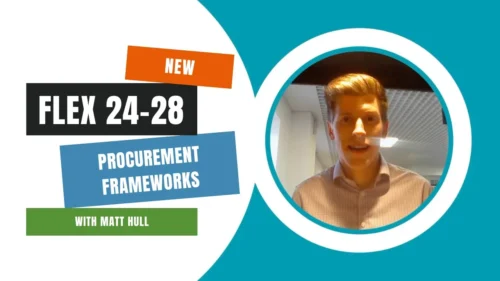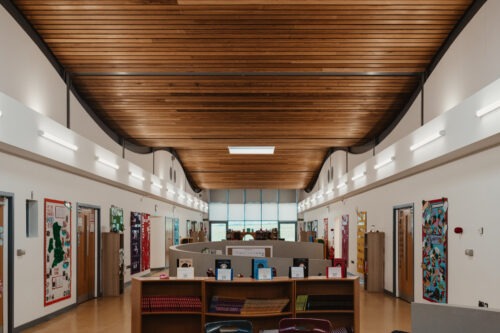In April, LASER’s Marketing Executive, Jack Corthine had the pleasure of interviewing Steve Baggs, former KCC Energy Manager, on his overall experience and key learnings applying and being accepted for PSDS funding.
In this interview, Steve talks openly about his experience from beginning to end, discussing the pros and cons of the funding scheme and detailing the fantastic zero carbon achievements KCC have accomplished from the works completed. Read this enlightening interview below:
Which funding phase did KCC enter and what projects did you cover in your application?
We went for the very first Public Sector Decarbonisation Scheme (PSDS) One. It was a brand-new scheme at the time, so we were right there at the forefront of activity. We had a number of different projects that we wanted to include in our bid. Some large-scale solar projects, both ground source heat pumps and air source heat pumps as well as some more traditional energy efficiency measures like LED lighting and insulation. We also looked at roof-mounted solar on some of our main office buildings.
Was your application accepted for all the areas that you mentioned?
Yes.
We started off putting in a large bid for all those different elements, and, as the application progressed, we realised “actually, we might not get all of those projects” and that a number of them would be hard to complete by the 31st of March 2021 project completion deadline set by the funding scheme.
It was not until there was a rethinking of the Section 31 grants, and how that might be applied to public sector organisations, in particular local authorities, that we suddenly started to realise we might get all the funding that we applied for.
What was the total value of your bid?
The funding we applied for was for projects within our own KCC buildings and owned land, plus the acquisition of a solar farm, and that totalled £20.6 million. We also had an additional bid accepted for schools in our borough which amounted to £1.2 million; so roughly nearly £23 million worth of funding was granted to us.
Did you manage to get all of the projects you intended to do completed?
Yes, all of the ones that we intended to do except for an LED lighting project where we found a significant proportion of the building had LED lighting already. Even though it was fairly old LED lighting, it was still fit for purpose, so it wasn’t available under the funding criteria.
Were you happy with the results?
Yes, I have to say that I’m incredibly happy with what was achieved.
There were moments where I thought certain projects might not go ahead, but we implemented all our zero carbon initiatives and spent the money in total, and I’m really pleased with that.
One of the biggest projects we had money for was £14 million to acquire a large solar farm project. Unfortunately, the initial solar farm we found didn’t go ahead for a number of reasons. But we were very lucky that, through some great work and support from LASER’s Zero Carbon team, we were able to identify and acquire a Somerset solar farm, Bowerhouse II, which was acquired at the end of March this year and will be producing renewable electricity, fulfilling our net zero promise and bringing in significant amounts of income back into KCC.
Would you say Bowerhouse II, the large-scale solar project, was the most successful project funded by the scheme?
Absolutely. If you’re just looking at the scale of the projects, it’s the largest one.
At 94 acres, Bowerhouse II has capacity for over 39,000 solar panels and will provide 22,000 megawatt hours of green electricity, reducing KCC’s Net Zero carbon reduction target by 30%.
It was potentially going to be the most difficult project to complete within the timescale and add to that the fact we had to make a big switch in the farm’s location, substituting our Kent location for one in Somerset, it was an excellent project.
If we didn’t identify that new solar project quickly, we would have had to have given that £14 million back to the government.
What would you say were the pros of PSDS Phase One?
From my point of view, the size of the funding.
Never before had we ever seen something like this. In terms of the size of the funding, previously we might have got small pots of money here and there, but to get £23 million through the door for KCC, and some school projects as well, was unprecedented really. I’m not sure we’ll ever get that amount of funding again.
Another pro was the ability for us to be able to then make those carbon savings.
We’ve made a 30% reduction in our overall operational carbon saving already and that is phenomenal really if you think about it. We have made a real dent into our carbon dioxide savings, which is brilliant, and we’ve now got a sizeable amount of money coming back into KCC with saving on energy bills via Bowerhouse II.
We all know those electricity and gas prices are going up at the moment, so, for us, that makes it an even bigger saving. We can also hopefully reuse the money that’s coming back into KCC for further energy projects, which is good news in terms of our potential carbon saving, reducing energy bills further.
And the cons?
I think the main issue for me was the timescale. The timescale to try and get these projects completed. That caused a lot of difficulty within the teams of KCC in terms of the governance; trying to get everything in place to be able to meet those timescales has been very, very difficult.
The second con was the timing. Would you believe it, in the year that we do these big projects, there’s a big economic crisis due to the pandemic, and a world-wide demand for a number of primary products. Things like glass, timber, solar panels, heat pumps – they all went up in price.
We had prices for October 2020 in the project costs which obviously changed dramatically. We were seeing an increase in prices of 30 to 40%. And then you also had the difficulties around installers and suppliers.
Our team know the process and SALIX requirements well and have in-house resource to support your team with project or programme management.
How has this helped KCC’s journey towards net zero?
As an organisation we have committed to being net zero by 2030, and without the help of the PSDS funding scheme we would be finding it very, very difficult to even make a start towards that target.
It was a big, big learning curve for KCC in terms of cross section working, you know, working with procurement, working with legal, working with finance, working with our infrastructure, partners, the environment team, and LASER as well.
Working all together as a team has been an eye-opening experience, but one that’s going to put us in good stead going forward.




